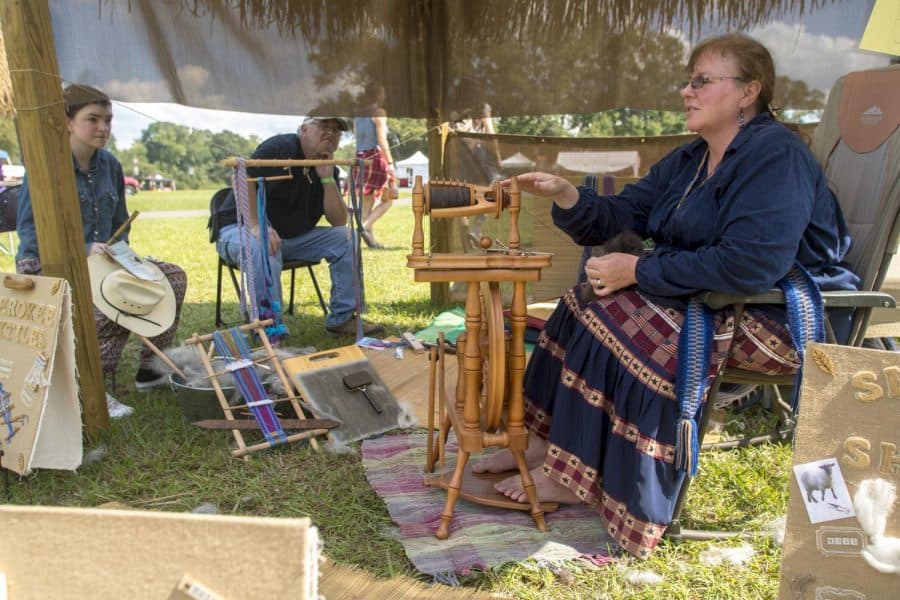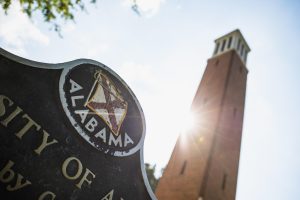Moundville Native American Festival celebrates heritage
October 8, 2018
Tents and pavilions sprung up across the grasses of Moundville Archaeological Park last Wednesday. The 30th annual Moundville Native American Festival, which lasted through Saturday, brought members of diverse southeastern communities to the Tuscaloosa area.
Many vendors and performers made appearances at the festival, and several nations were represented among the participants, selling their goods to local visitors.
“I’m a descendant of Poarch Creek,” J. Lee Woods said, “I specialize in unusual dream catchers with birds in them because birds are our sentries. They warn everyone of danger.”
Her shop was filled with large hanging dream catchers adorned with small, colorful birds. Traditional Cherokee turbans lay on the tables lining the edge of the tent, and the center aisles were full of aromatic organic soap, woven baskets of grass and containers shaped out of gourds, a specialty of Woods’ craftsmanship style.
“We like events like this because there’s a lot of children,” Woods said. “Native Americans revere their children because they are the future. We value the opportunity to teach the children when they come in and ask questions.”
A variety of storytellers and performers took to the Native American stage over the course of the four-day festival. Cultural dance teams, the Grayhawk Band and Alabama Wildlife Center’s Birds of Prey program all educated their audiences on the importance of the Native American ways of life.
Flute maker and artist Billy Whitefox performed Wednesday and Thursday, playing traditional native music on his own flutes. Whitefox combines elements of his craft into his playing as well, telling Native American folk tales that coincide with his music.
“I make a flute out of pretty much anything I can put holes in,” said Whitefox, a member of the southeastern Muscogee Creek Nation. “Turkey bones, deer leg bones, river cane, anything I can find naturally. The legend goes that a bird made the first flute, pecking holes in river cane looking for bugs. When we play, we hope that the song can lift someone’s spirits who may need that.”
Many UA students who volunteer with the Moundville Archaeological Site were also at the festival. It is only one of many service opportunities offered at the site, but perhaps one of the most demanding. Volunteers staffed information tables, directed museumgoers and assisted with the various events.
“I’ve been coming out here seven or eight years. I have some [Cherokee] on my dad’s side,” said Dalton Absher, a senior majoring in anthropology. “I applied for the work-study position here, and they brought me on just in time for the festival.”
The Native American Festival brought history to life in a realistic way for its attendees. The performances and activities gave many educational opportunities to the droves of schoolchildren who came on field trips. Traditional native craftspeople had rows of small tents set up, showing kids the art of basket weaving, pottery and flint knapping, among others.
“I think the most important part of the festival is the live demonstrations,” Absher said. “They really take you back in time, and there’s a little bit of everything. [The demonstrations] do a good job of showing people the complexity of the culture.”
Though the festival has ended, the effects still linger. The field trips taken there will be long remembered. Knowledge has passed on from the descendants of one culture to the new generations of another. In the end, that’s what the festival is all about.
To plan a visit or find more information leading up to next year’s festival, visit www.moundville.ua.edu. To volunteer, visit www.moundville.ua.edu/volunteer.





















